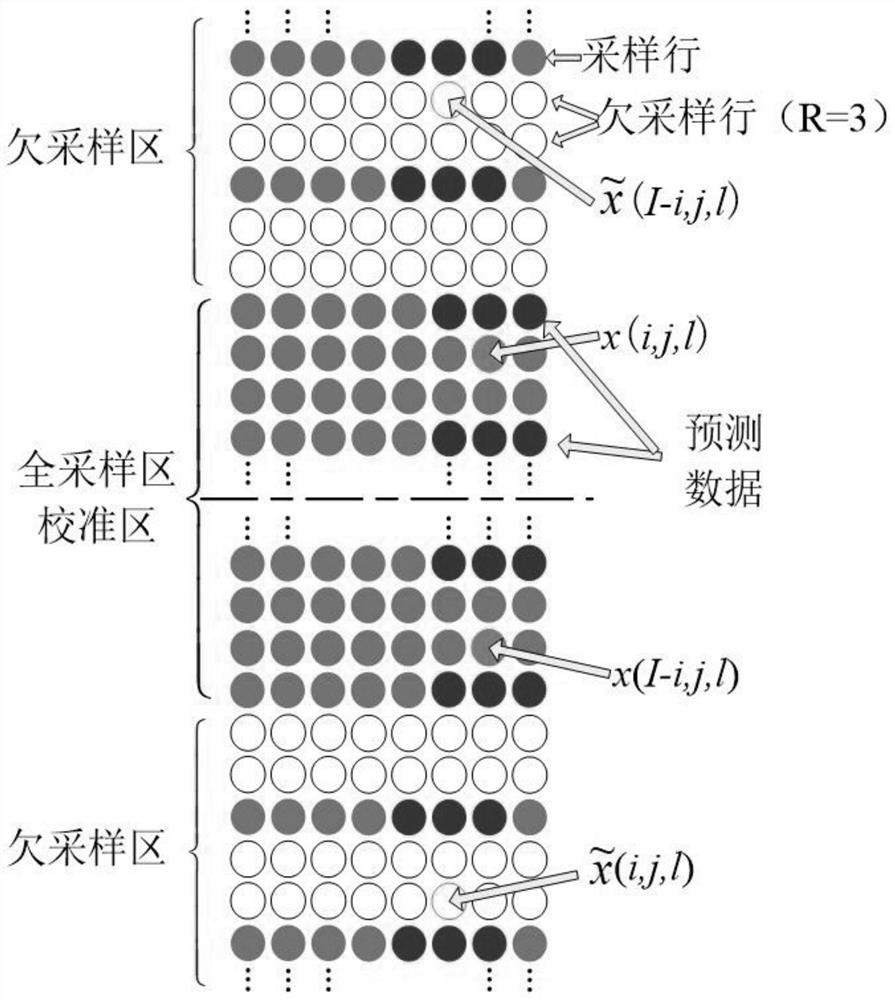Improved algorithm for parallel magnetic resonance imaging
A technology of magnetic resonance imaging and improved algorithm, which is applied in the directions of using nuclear magnetic resonance imaging system for measurement, magnetic resonance measurement, and magnetic variable measurement, etc., which can solve the problems of obvious noise curling artifacts, residues, and poor reconstruction effects, etc. Achieve the effects of sufficient information, improved imaging speed, high practical value and promotion value
- Summary
- Abstract
- Description
- Claims
- Application Information
AI Technical Summary
Problems solved by technology
Method used
Image
Examples
Embodiment
[0031] Such as figure 1 As shown, this embodiment provides an improved algorithm for parallel magnetic resonance imaging, which utilizes K-space data received by phased array coils, and there are L phased array coils in this embodiment.
[0032] Specifically: the improved algorithm of the parallel magnetic resonance imaging of the present embodiment comprises the following steps:
[0033] The first step is to perform R times undersampling (R=2, 3, 4, 5, 6) on the imaged object, that is, to take the n×R row (n=1, 2, 3...), in the unsampled row The data is filled with 0, and the middle low frequency part (can be 16 lines or 32 lines) is used as the calibration area for full sampling to obtain the matrix F;
[0034] Step 2: find conjugate symmetric rows: Different from other GRAPPA algorithms and their improved algorithms, this embodiment adopts the conjugate symmetry of K space. Assuming that the k-space data received by each coil has a total of I lines, the i-th line of data ...
PUM
 Login to view more
Login to view more Abstract
Description
Claims
Application Information
 Login to view more
Login to view more - R&D Engineer
- R&D Manager
- IP Professional
- Industry Leading Data Capabilities
- Powerful AI technology
- Patent DNA Extraction
Browse by: Latest US Patents, China's latest patents, Technical Efficacy Thesaurus, Application Domain, Technology Topic.
© 2024 PatSnap. All rights reserved.Legal|Privacy policy|Modern Slavery Act Transparency Statement|Sitemap

